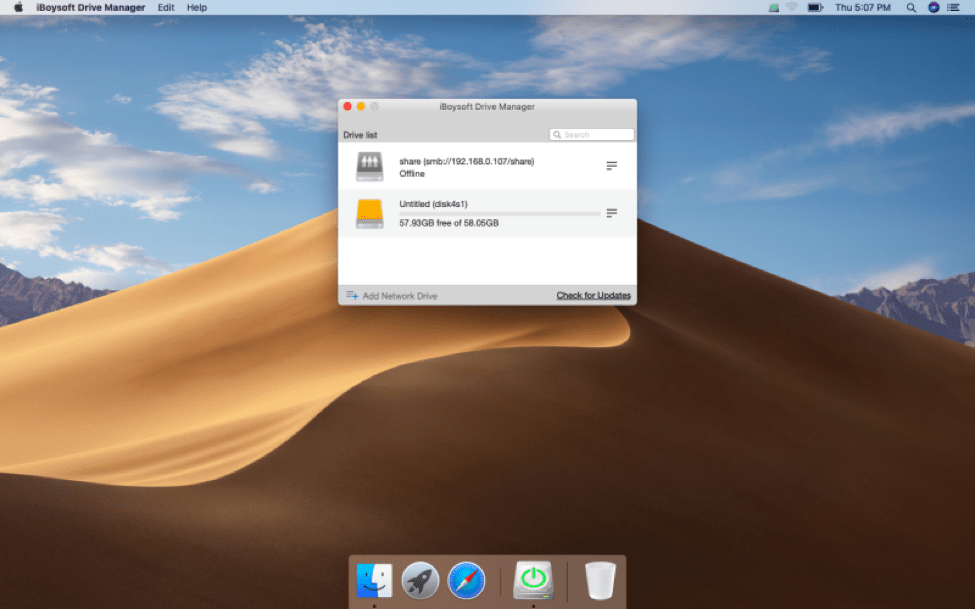

- #COULD NOT UNMOUNT DISK OSX MAC OS#
- #COULD NOT UNMOUNT DISK OSX INSTALL#
- #COULD NOT UNMOUNT DISK OSX FULL#
- #COULD NOT UNMOUNT DISK OSX MAC#
This should then allow you to partition and work with the physical disk again.Įnter the following where ‘MacintoshHD’ is the name of the newly created Mac formatted partition, and where ‘x’ is your disk identifier, (remember to use the ‘diskutil list’ command if you need to find out your disk identifiers): sudo diskutil eraseDisk JHFS+ MacintoshHD diskxĢ) Press RETURN.
#COULD NOT UNMOUNT DISK OSX MAC OS#
We are now going to force erase the physical disk, creating a single Mac OS Extended (Journaled) volume. OK, we’ve tried to be nice, but is the disk STILL not letting you work with it?īe sure you backup your files to an external drive or second internal drive, the following procedure will remove everything from the hard drive!

This should force unmount the entire physical disk and all its related volumes: (Remember to use the ‘diskutil list’ command if you need to find out your disk identifiers): sudo diskutil unmount force /dev/diskxĢ) Press RETURN. (For example to Erase/Partition the disk).ġ) Using the Terminal application again, booting from OS X Recovery or an external bootable drive.Įnter the following where ‘x’ is your disk identifier. This should force unmount the volume:ģ) Attempt again to perform whichever task caused your ‘Couldn’t Unmount Disk’ error. Still unable to work on the disk? Still getting those pesky disk errors?īit more drastic, but you can attempt to force a volume or the entire physical disk to unmount:ġ) Using the Terminal application again, booting from OS X Recovery or an external bootable drive,Įnter the following where ‘x’ is your disk identifier and ‘y’ is your volume identifier, (remember to use the ‘diskutil list’ command if you need to find out your disk and volume identifiers): sudo diskutil unmount force /dev/diskxsyĢ) Press RETURN.


(For example to Erase/Partition the disk). This should unmount all volumes of the physical drive:Ĥ) Attempt again to perform whichever task caused your ‘Couldn’t Unmount Disk’ error. For a single drive system this will probably be ‘disk0’ :Ģ) Now enter the following where ‘x’ is your disk identifier: sudo diskutil unmountDisk /dev/diskxģ) Press RETURN. In my example below, the disk name is ‘Server’. You should also see the name of the disk such as ‘Macintosh HD’. It will look like ‘diskx’ where ‘x’ is an integer starting at 0. From the listing, look in the Identifier column for your disk identifier.
#COULD NOT UNMOUNT DISK OSX FULL#
(Or if you are booting to your own bootable drive with a full system, open Disk Utility from /Applications/Utilities). You can try booting from OS X Recovery (by holding ‘CMD’ + ‘R’ keys at startup) or an external drive and use the command line to attempt to unmount or erase the disk:ġ) Once booted from OS X Recovery, select Terminal from the Utilities pull down menu. Attempt again to perform whichever task caused your ‘Couldn’t Unmount Disk’ error.Also perform a permissions repair if required. Select the ‘First Aid’ tab and verify the troublesome disk, repairing if needed.If you have created your own bootable drive with a full system, open Disk Utility from /Applications/Utilities. If you have used our method above to create a bootable installer, choose ‘Disk Utility’ from the available menu.Then select the desired external drive from the startup manager screen and press the enter key. If you have an external bootable disk, connect this to your Mac and power your Mac up whilst holding down the OPTION/ALT key.Some of the following steps are destructive and will lose ALL data on your drive. I would strongly recommend at this stage attempting to back up any data that is required before proceeding with the following steps.
#COULD NOT UNMOUNT DISK OSX INSTALL#
To create your own bootable disk, refer to our blog ‘Creating a Mavericks bootable install disk’. You can then run Disk Utility from there.Īn external drive or a network drive is preferred if it is the internal hard drive you have an issue with, since the OS X Recovery is a partition on the same physical drive which may not be able to successfully unmount or modify your internal disk. So the first thing to do is to startup the Mac from another bootable drive such as an external drive or OS X Recovery. Normally, any ‘Couldn’t Unmount Disk’ error is attributed to circumstances where the boot drive is being modified or is being used by an application or process. I have found myself recently experiencing a couple of Macs which would not allow me to repair the directory or permissions in Disk Utility, or erase/partition the drive with an error such as: ‘Disc erase failed couldn’t unmount disc’ or ‘Disk Erase failed with the error: Couldn’t unmount disk.’Įven trying to use Network Deployment tools such as Apple’s Netinstall service or DeployStudio have also failed to deploy due to these errors.


 0 kommentar(er)
0 kommentar(er)
